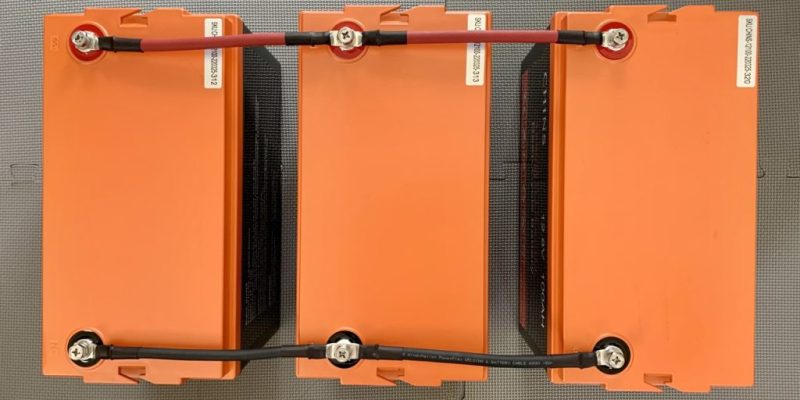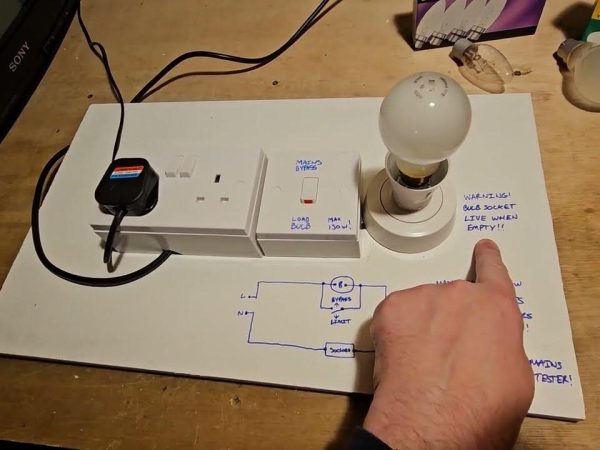How to Wire Batteries in Series: A Complete Guide

Batteries power everything from small electronics to large off-grid solar systems. Sometimes, one battery just isn’t enough — you need more voltage to run your devices efficiently. That’s where wiring batteries in series comes in. This configuration allows you to combine multiple batteries to increase voltage without changing the overall capacity (amp-hours) of the battery bank.
In this guide, you’ll learn:
- How to wire batteries in series
- When and why to use it
- The exact steps to wire batteries in series
- Safety precautions
- Common mistakes and how to avoid them
What Does Wiring Batteries in Series Mean?
Wiring batteries in series means connecting the positive terminal of one battery to the negative terminal of the next battery. This creates a chain, allowing the voltages to add together while the amp-hour capacity stays the same.
Example:
Two 12V batteries connected in series produce 24V, but the amp-hour rating remains equal to one battery’s capacity.
Formula for Series Voltage:
Total Voltage = Voltage of Battery 1 + Voltage of Battery 2 + … + Voltage of Battery n
Capacity stays constant:
Total Capacity (Ah) = Capacity of one battery
When Should You Wire Batteries in Series?
You should wire batteries in series when:
- Your device/system requires higher voltage than a single battery provides.
- You’re running DC systems like 24V or 48V in solar setups or electric vehicles.
- You need efficiency improvements in power delivery for long-distance wiring.
Common Applications:
- Off-grid solar systems
- RV and marine electrical setups
- Electric scooters and bikes
- Backup power systems
Advantages of Wiring in Series
- Increased Voltage – Powers equipment that requires higher voltage input.
- Reduced Current Flow – Higher voltage reduces current for the same power, which lowers resistance losses in cables.
- Simple Setup – Fewer parallel connections to manage.
- Better Performance in Some Motors – Motors often run more efficiently at higher voltages.
Disadvantages of Wiring in Series
- Single Point of Failure – If one battery fails, the whole series can stop working.
- Imbalance Issues – Uneven charging/discharging can damage batteries over time.
- Voltage Overload – Using the wrong voltage can damage connected devices.
- Matching Requirements – All batteries must be the same type, capacity, and age.
Safety Precautions Before Wiring
Working with batteries involves electrical hazards. Before starting:
- Wear protective gear: safety glasses, insulated gloves.
- Ensure proper ventilation to avoid gas buildup from lead-acid batteries.
- Check voltage compatibility with your device.
- Disconnect chargers and loads before wiring.
- Use insulated tools to prevent accidental shorts.
Step-by-Step Guide: Wiring Batteries in Series
Example: Wiring Two 12V Batteries to Get 24V
Tools and Materials Needed:
- Two or more batteries of the same type and rating
- Properly rated battery cables
- Wrenches or screwdrivers (non-sparking preferred)
- Voltmeter or multimeter
Step 1: Identify Terminals
Locate the positive (+) and negative (–) terminals on each battery.
Step 2: Arrange Batteries
Place batteries close together but with enough space for cable connections. Avoid stacking them in a way that blocks ventilation.
Step 3: Connect Positive to Negative
Use a battery cable to connect the positive terminal of the first battery to the negative terminal of the second battery.
Step 4: Connect to System
Your system’s positive cable will connect to the positive terminal of the first battery.
Your system’s negative cable will connect to the negative terminal of the last battery.
Step 5: Check Voltage
Use a multimeter to confirm the combined voltage before powering your device.
Series Wiring Diagram
+ [Battery 1] – + [Battery 2] – + [Battery 3] –
|_________________|_________________|
- Positive to negative connections between batteries.
- The system connects to the first positive and last negative.
Example Voltage Combinations
| Battery Voltage | Number in Series | Total Voltage |
| 6V | 2 | 12V |
| 6V | 4 | 24V |
| 12V | 2 | 24V |
| 12V | 4 | 48V |
Common Mistakes to Avoid
- Mixing Battery Types – Never mix lead-acid with lithium or old batteries with new ones.
- Ignoring Polarity – Connecting wrong terminals can cause sparks, damage, or explosions.
- No Voltage Check – Always verify with a multimeter before connection.
- Overlooking Maintenance – Series configurations require regular balance checks.
- Loose Connections – Can cause overheating and voltage drops.
Battery Balancing in Series Connections
In a series setup, one weak battery can bring down the whole system. To prevent imbalance:
- Use batteries from the same batch and age.
- Perform regular voltage checks.
- Consider using a Battery Management System (BMS) for lithium batteries.
- For lead-acid, perform equalization charges as recommended.
Series vs. Parallel: What’s the Difference?
Series Wiring
- Increases voltage
- Capacity (Ah) stays the same
- Positive to negative connections
Parallel Wiring
- Increases capacity (Ah)
- Voltage stays the same
- Positive to positive, negative to negative connections
Sometimes, systems use a series-parallel combination to achieve both higher voltage and higher capacity.
Troubleshooting a Series Battery Bank
- Low Voltage Reading? Check for a faulty battery or loose connection.
- Uneven Voltages? Indicates one battery is aging faster — replace it to avoid stressing the others.
- Overheating? May be caused by overcurrent, undersized cables, or poor connections.
Pro Tips for Long-Lasting Series Battery Banks
- Charge fully before wiring to ensure equal starting voltages.
- Label your cables for easier maintenance.
- Inspect connections monthly for corrosion or looseness.
- Avoid deep discharges — follow manufacturer’s recommended depth-of-discharge.
- Store in temperature-controlled environments when possible.
Conclusion
Wiring batteries in series is a simple yet powerful way to increase voltage for higher-demand applications. Whether you’re powering a solar system, an electric bike, or a marine vessel, understanding the process ensures safe and efficient operation. Remember: match your batteries, follow polarity carefully, and prioritize safety at every step. A well-maintained series battery bank can provide years of reliable power.
FAQs
1. Can I wire batteries of different voltages in series?
No. Mixing voltages can cause charging problems, damage equipment, and shorten battery life.
2. Will wiring in series increase my capacity (Ah)?
No. Series wiring increases voltage but keeps capacity the same.
3. What happens if one battery fails in a series connection?
The whole circuit is disrupted, and your system may lose power until the faulty battery is replaced.
4. Can I mix new and old batteries in series?
Not recommended. Older batteries can limit performance and cause imbalance.
5. How do I know if my batteries are balanced?
Measure the voltage of each battery after charging. They should be within a small margin (usually less than 0.1V difference).
Also read: Do Smoke Detectors Detect Vapor? Everything You Need to Know











